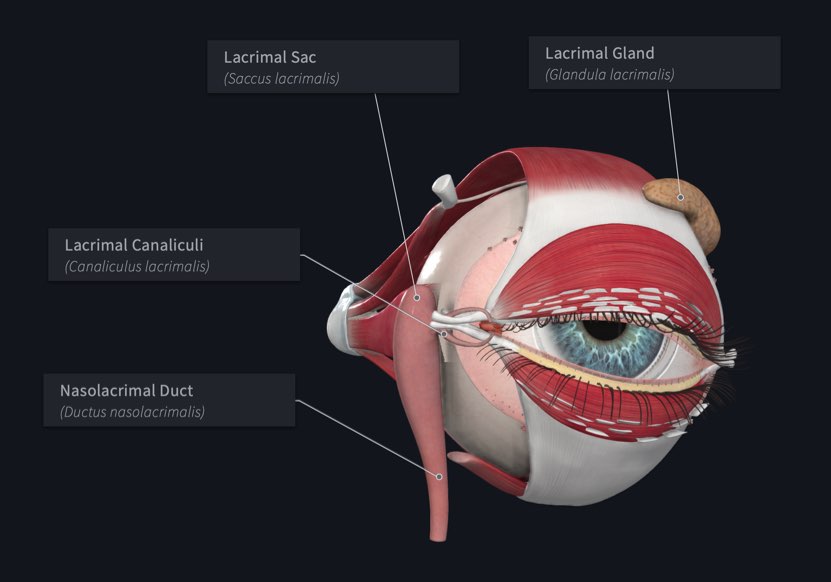Let’s explore Complete Anatomy’s stunning new eye prosection by examining the lacrimal system and diving into some facts about tears. The shedding of tears, or crying as its commonly known as, is a natural biological response to a variety of factors, including pain, irritation to the eye, or overwhelming emotion. So where do these tears come from?
The lacrimal system of the eye is responsible for the production of tears and how they’re drained from the eye. It is composed of a system of structures, some of which produce the tears (i.e. the lacrimal glands and accessory lacrimal glands) and some of which provide a drainage pathway for the tears, draining the fluid into the nasal cavity (i.e. the lacrimal canaliculi, lacrimal sac, and nasolacrimal duct).

We have three different types of tears which occur in specific situations and serve different purposes:
- Basal tears – These tears can be thought of as the basic functional tears which we produce all the time, their function is to keep the cornea of the eye lubricated. They also serve a protective function as they fight against bacterial infection.
- Reflex tears – These are the tears that are produced when your eye is irritated, for example when a foreign particle or a strong odor enters the eye, such as tear gas or onions being cut. These tears function to clear out the irritant from the eye in order to protect it.
- Psychic tears – These are the tears we are all most familiar with! The tears that are produced in response to a strong emotion, which could be happiness, sadness, stress, or a response to physical pain. Scientific evidence has suggested that these tears contain a naturally found painkiller called leucine enkephalin, as well as containing stress hormones as a way of eliminating them from the body. Perhaps this is why a good cry can feel therapeutic!
The Eye Prosection is available in Complete Anatomy 2019, exclusive to Student Plus, Educator and Professional license holders. Try it for free today, or head over to our pricing page to compare plans.
